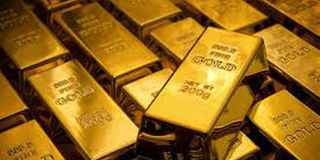Gold demand reached 4-year high in 2016, says global body

What you need to know:
- According to the report, demand was largely driven by inflows into gold-backed exchange-traded funds (ETFs) of 532 tonnes, the second-highest year on record, as investors responded to concerns over future monetary policy, geopolitical uncertainty and negative interest rates.
- “It was an interesting year driven by a particularly strong set of trends and drivers for the first three quarters,” WGC director and investor relations manager John Mulligan told Mining Weekly Online in a telephone interview.
Johannesburg. Global gold demand rose 2 per cent in 2016 to reach 4,309 tonnes, the highest level in four years, according to the World Gold Council’s (WGC’s) latest ‘Gold Demand Trends’ report, which was launched earlier last week.
According to the report, demand was largely driven by inflows into gold-backed exchange-traded funds (ETFs) of 532 tonnes, the second-highest year on record, as investors responded to concerns over future monetary policy, geopolitical uncertainty and negative interest rates.
“It was an interesting year driven by a particularly strong set of trends and drivers for the first three quarters,” WGC director and investor relations manager John Mulligan told Mining Weekly Online in a telephone interview.
He pointed out that demand for gold in 2016 ended 2 per cent higher than in 2015 at 4,308.7 tonne, “but this was very much an investment demand story and, certainly in the first three quarters, it was an investment demand story from the institutional and professional investor”.
In the third quarter, Mulligan pointed out, investment in gold ETFs had produced record highs, 70 per cent up from the year before and resulting in about 532 tonnes of the overall gold demand for last year. “That was very significant, as it drove a very strong investment story.”
However, the focus on institutional and professional investment slowed in the fourth quarter, which Mulligan suggested was owing to the election of US President Donald Trump.
“Investors pretty much across the board were aware of the risks, uncertainties and vulnerabilities in the global economy and geopolitics, but particularly against capital market sentiment, which swung very radically following the US election, resulting in an immediate change in market sentiment.”
He pointed out that while the price of gold improved overall in 2016 there was a drop in the price subsequent to the change in market sentiment, resulting in a 26 per cent increase in the gold bar and coins market in the fourth quarter of 2016 compared with the fourth quarter of 2015.
Overall, the bar and coins demand grew 2 per cent in 2016 at 367 tonnes, bolstered by an 86 per cent fourth-quarter increase in Chinese demand compared with the corresponding period in 2015. In the US bar and coin demand also increased by 80 per cent to 30 t in the fourth quarter, while German demand remained relatively flat but still strong at 35 tonnes.




